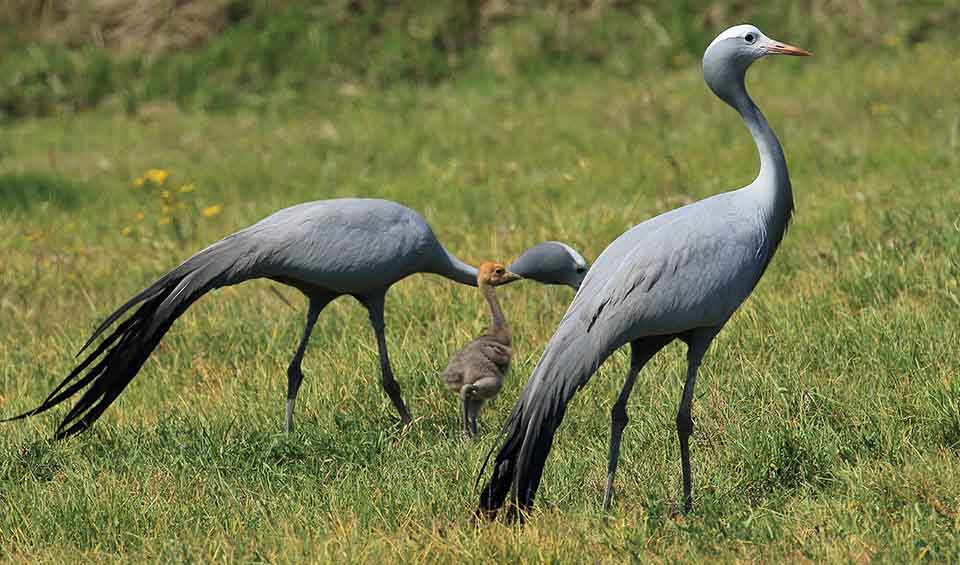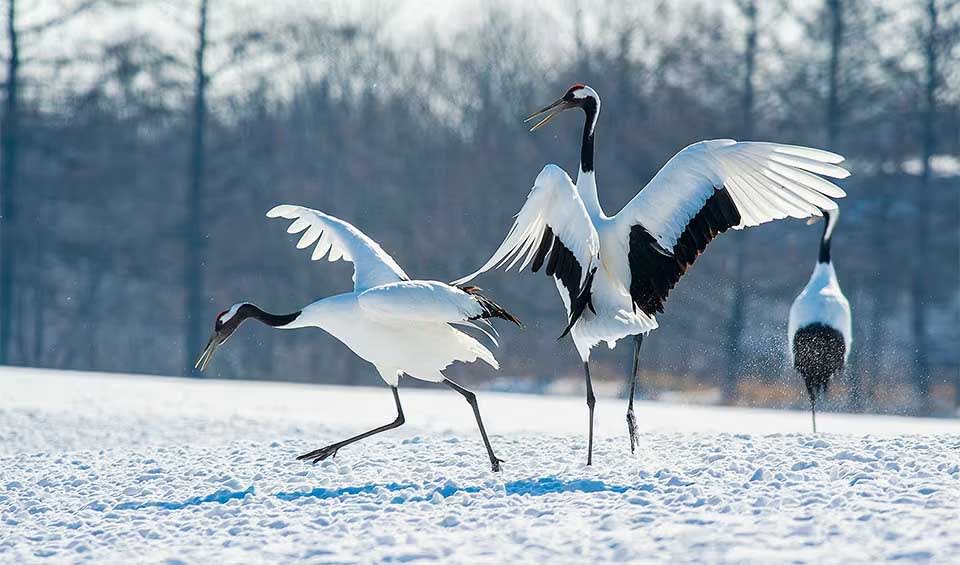Grus
The long legs, widespread wings, and heavy bodies make them poor pilots; therefore, they often collide with objects like power lines.
Comprising some of the world’s most majestic cranes, exhibits a unique blend of vulnerability and resilience in the face of nature’s challenges. These birds are remarkable for their grace and beauty and their complex biological and ecological traits, which have fascinated ornithologists and nature lovers alike.
One of the most distinctive features of Grus cranes is their convoluted trachea. Unlike most birds, where the trachea is a relatively straight tube leading from the throat to the lungs, in Grus cranes, it is coiled and can be exceptionally long, extending into the sternum before reaching the lungs. This unique anatomical structure is believed to contribute to the deep, resonating calls for which these cranes are famous, allowing their haunting and powerful voices to carry over long distances. However, this same feature also renders them susceptible to health issues, particularly respiratory problems such as dyspnea or difficulty breathing. The complexity of their tracheal structure can make it harder for them to clear infections or obstructions, leading to an increased risk of disease.
Young birds, with their still-developing immune systems, are especially prone to fungal infections in the trachea. These infections can be debilitating and even fatal if not addressed promptly, highlighting the need for careful monitoring and conservation efforts to protect these vulnerable juveniles.
Despite their impressive size and strength, Grus are not the most adept travelers. Their large bodies and long wings make sustained flapping flight a significant energy expenditure. To overcome this challenge, they have become masters of soaring, relying heavily on thermal currents to lift them into the air and sustain their long migratory journeys. These thermals are columns of rising warm air created by the sun’s heat warming the ground below. By circling within these thermals, cranes can travel vast distances with minimal effort, always moving toward the direction of the wind to optimize their flight path.
Species in this genus
Whooping crane
The tallest bird of North America- saved from the brink of extinction, with less than 20 left in the ’40s
Blue crane
As South Africa’s national bird, they’re not just a symbol; they’re a living embodiment of the country’s spirit
Red-crowned crane
A symbol of immortality and peace in many Asian cultures
Wattled crane
The “gentle giants” of the wetlands
Black-necked crane
Among the highest-dwelling cranes on Earth
Common crane
The flocks of this social and gregarious bird are fond of migration, flying over the horizon and creating a V-shaped formation
Demoiselle crane
The smallest of all the crane species and is known for its elegance and grace








